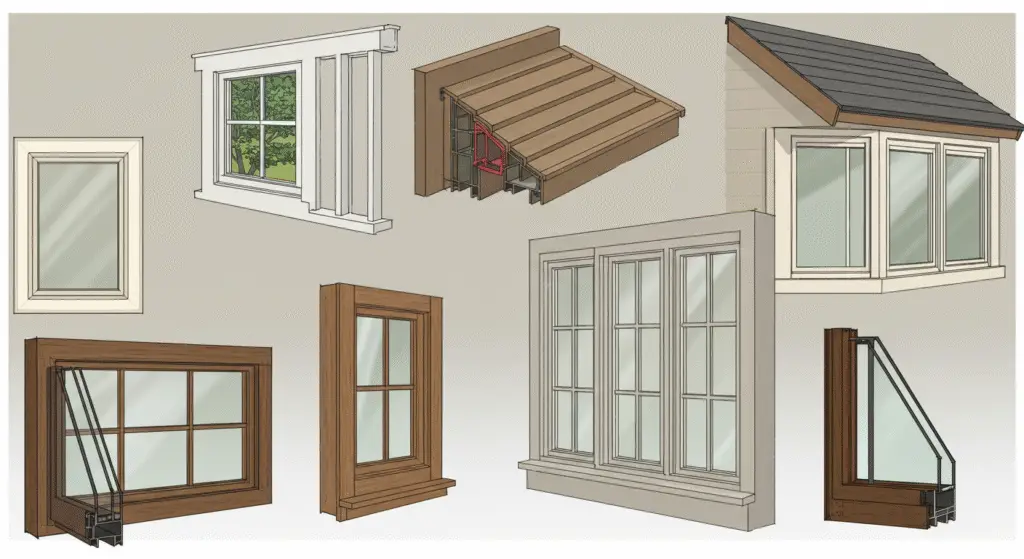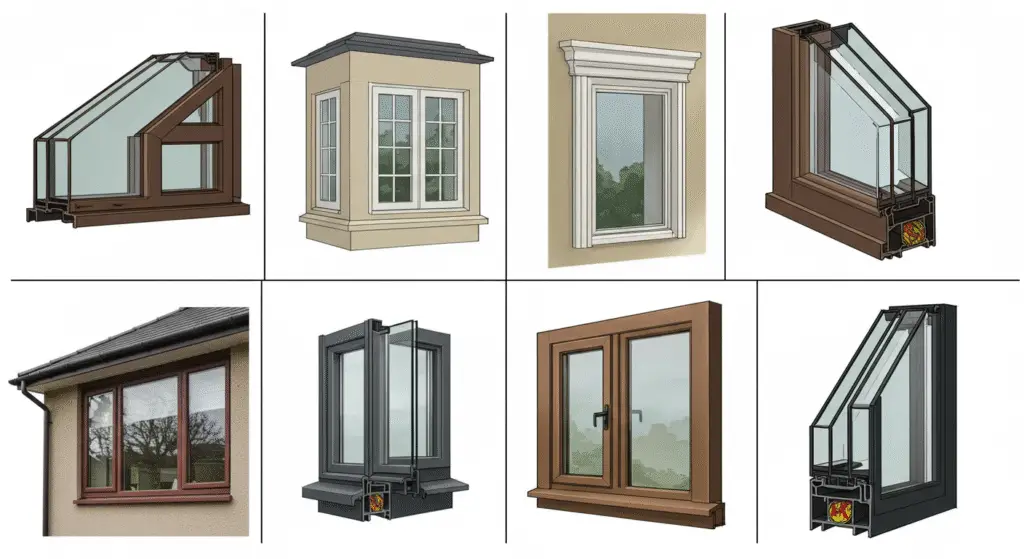
When talking about windows, most people focus on the glass, frame, or overall design. But there’s one component that often goes unnoticed—yet it’s essential for the structure and function of your windows. That’s the window stiles.
These vertical elements are more than just simple parts of the frame. They play a crucial role in how a window looks, operates, and holds up over time. If you’re planning to renovate your home, replace your windows, or even just learn more about how they work, understanding window stiles can help you make better decisions.
What are window stiles?
Window sills are the vertical parts on either side of a window sash. They help hold the sash together, working along with horizontal rails. Depending on the type of window—like double-hung, sliding, or casement—the stiles are designed to accommodate the way it opens and closes.
In a way, stiles are like the spine of the window sash. Without them, the structure wouldn’t hold together properly, and the window wouldn’t operate smoothly.
Different types of stiles
There are various kinds of stiles depending on the window design and material used. Some windows have visible, prominent stiles that are part of the overall style, while others feature slim or hidden stiles for a more modern look.
You’ll often see interior stiles that are designed to match the room’s décor, while exterior stiles must be durable and weather-resistant. The type of stile used can affect everything from appearance to how much light enters your room.
Materials used in window stiles
The material of the stile has a big impact on the window’s performance and lifespan. Wood is a classic choice, offering charm and insulation, but it requires regular maintenance. Vinyl stiles are very common in modern homes due to their low maintenance and durability. Aluminum stiles offer strength but may not insulate as well as other materials.
Fiberglass and composite materials are also becoming popular, combining strength and energy efficiency. Each material has its pros and cons, so your choice will depend on your climate, budget, and preferences.
Energy efficiency and insulation
Well-constructed window stiles help create a tight seal between the window and the frame, keeping out drafts and improving insulation. This has a direct impact on your home’s energy efficiency.
Poorly made or damaged stiles can allow air leaks, leading to higher heating and cooling costs. When evaluating energy-efficient windows, don’t just look at the glass or frame—check the quality of the stiles as well.
Signs your window stiles need attention
Like other parts of a window, stiles can wear out or become damaged over time. You might notice signs like warping, cracking, or difficulty in opening and closing the window. In some cases, you may see moisture damage or drafts near the window.
When these problems occur, they’re often linked to the condition of the stiles. If left unaddressed, the damage can spread and affect the entire window unit.
Maintenance tips
Maintaining your window stiles isn’t complicated. A few small actions can keep them in great shape for years. For wood stiles, occasional repainting or sealing is important to prevent rot. With vinyl or aluminum, routine cleaning is usually enough. Make sure to keep the area around the stiles clean and dry to avoid long-term damage.
If your windows are exposed to extreme weather, inspect them more frequently. Early detection of issues like swelling, peeling, or cracking can save you from costly repairs down the road.
Replacing window stiles
If the damage is beyond a simple fix, you might need to replace the stiles—or even the whole window, depending on the extent. In some cases, individual parts can be repaired or swapped out by a professional. But if your windows are old or showing multiple signs of wear, a full replacement may be more cost-effective in the long run.
Replacing the stiles can improve insulation, window function, and even the look of your home. It’s also an opportunity to upgrade to better materials.

DIY or call a professional?
Small tasks like cleaning, sealing, or painting can usually be done yourself. But when it comes to structural repairs or full replacements, it’s best to call a window expert. Getting the fit and installation right is essential—especially when it comes to energy performance and long-term durability.
Improper repairs might seem to work at first, but they can create more problems over time. If you’re unsure, a quick consultation with a contractor can help you decide the best route.
The design impact of stiles
Aside from structure and function, stiles also play a role in the design of your windows. Wider stiles can give windows a more traditional look, while narrow or minimal stiles create a modern, sleek appearance.
They can be customized to match the room’s interior or the exterior architectural style of your home. In some designs, they can even be used as a statement feature, especially when made from high-end materials.
What’s new in window stiles?
Modern window stiles have come a long way. Today, they’re designed not only for performance but also for smart features. Some high-end window systems now include sensors within the stile that can detect whether the window is open or closed, monitor moisture levels, or even connect to a smart home system.
Advanced materials like reinforced composites are also making stiles stronger and more resistant to the elements, which is a big plus for homeowners who want long-lasting results with minimal upkeep.
Final thoughts
Although window stiles may seem like a small part of your home, they have a big impact on how your windows function and look. From contributing to energy savings to adding to the design of a room, they’re worth paying attention to.
If you’re replacing or upgrading your windows, take the time to understand the stile options available. A little knowledge goes a long way in making smart, lasting choices for your home.
